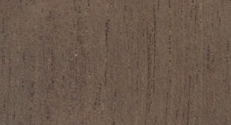JM - Tropical Wood
Peruvian Walnut
- Species
Junglns spp.
- Family
Juglandaceae
- Characteristics
Heartwood tends to be darker than temperate walnut species, with a deep chocolate brown color, sometimes with a purplish hue. May also contain streaks of lighter-colored wood mixed throughout the heartwood, which can sometimes be extensive and result in a high degree of waste. Grain figuring such as curl seems to be much less common than other walnut species.
- Workability of Peruvian Walnut Flooring
eing somewhat soft, Nogal works with no difficulty with both hand and power
tools. When installing the Peruvian Walnut flooring, a manual nailer, staples, and pneumatic nailers can be used without problems. It holds screws well, and it glues, stains, and polishes to a very attractive finish. It can be somewhat difficult to sand with flooring equipment because of its softness. Professional sanding and finishing is recommended. Interior Use Only.
- Uses
Peruvian Walnut is also known as Tropical Walnut or South American Walnut. It originates from Central and South America. Peruvian Walnut can also be used for
cabinetry, musical instruments, trimming, and flooring.


- Technical properties
Basic density
0.56 g/cm³
Tangential shrinkage
5.2%
Radial shrinkage
2.7%
T/R ratio
1.9
Bending modulus of elasticity
1,711,445 lbf
Breakage modulus of elasticity
9,282 lbf
Parallel compression (RM)
367 kg/cm²
Perpendicular compression (ELP)
140 kg/cm²
Grain parallel cut
135 kg/cm²
Hardness on the sides
1080 lbs
Newsletter
[mc4wp_form id="533"]
Species
© All Copyright 2024 by Jm Tropical Wood


